New chip, new start, new luck? Actually, the customers can only be pleased that AMD is so flexible with the current prices of the Radeon RX 590 and RX 580 downwards. With an EIA starting at 225 euros including VAT, the road price for the new cards will certainly not be far from the magic 200 euro mark in a few weeks. And that's exactly where the new models of the Nvidia GeForce GTX 1660 are supposed to be scraging around without the Ti, but also making the GeForce GTX 1060 obsolete, which will start a day before the launch. 200 Euros (and more).
Like the big sister with the Ti abbreviation, the GeForce GTX 1660 is based on the TU116, more specifically the TU116-300, a new graphics processor that integrates Turing's improved shaders, new cache architecture, and adaptive shading support. The GPU has fewer shaders than the TU116-400 and is only connected to the slower GDDR5 memory compared to the Ti model, which, due to bandwidth disadvantages, very safely prevents cannibalizing the Ti by an overclocked non-Ti. But even that is nothing new.
By omitting the RT cores for accelerated ray tracing and the tensor cores for inferencing in games, the TU116 is a slimmer graphics processor, but it also has to (and can) do without features. However, the EIA of EUR 225, including VAT announced by Nvidia, is probably a small compensation that points in the right direction for the customer. Now all i have to do is get the performance right and that's what I'm going to find out.
Launch without reference cards
There is no reference card, so this time the launch goes directly to the board partners. This also has its charm, because on the first day you can examine and test the manufacturers' own designs. For my test I picked out the MSI GTX 1660 Gaming X as the main card, even if this time the clock is practically the same for all tested cards. But the effort for teardown and board analysis is simply too high for two or even three cards at the end, so I ask for your understanding.
The other two cards are the much simpler MSI GTX 1660 Ventus XS (without RGB and Ti) and the Gigabyte GTX 1660 OC, which my US colleague got sampled. For the latter, I only have the benchmark data for comparison, since Gigabyte has sent us a sample, but it also does not change the fact that all three cards act equally fast. At least the MSI GTX 1660 Ventus XS is the model that MSI also wants to position on the market in Germany at the price recommendation of 225 euros on the launch day, which Nvidia has collected.
Optics and feel of the MSI GTX 1660 Gaming X
The also approx. 870 grams of heavy card measures in its length 24.8 cm gross from the outer edge slot bezel to the end of the radiator cover. It is 4.2 thick (plus the 5 mm for the backplate on the back) and 12 cm high (from the top edge of the motherboard slot to the top edge of the radiator cover). The anthracite-coloured radiator cover is kept in the usual MSI-Edge style and quite restrained. It only gets colorful with electricity, because translucent plastic strips have been incorporated, behind the RGB LEDs, which can also be controlled by software
The backplate is made of brushed aluminium and is also screwed to the cooling frame from the front. For the rest I refer to the complete tear down in text, picture and the video of the almost identical Ti-sister.
Optics and feel of the MSI GTX 1660 Ventus XS
The slightly over 700 grams and quite short card measures in its length only 20.3 cm gross from the outer edge slot bezel to the end of the radiator cover. It is 3.5 thick (plus the 4 mm for the backplate on the back) and 12 cm high (from the top edge of the motherboard slot to the top edge of the radiator cover). The silver-metallic radiator cover counteracts the matt-black bodysuit and dispenses with all the light stuff.
The backplate is made of black plastic in brush look and also screwed from the front with the cooling frame. There is not much more to report at this point, because the high-resolution pictures of the gallery already do this.
What makes Turing better than Pascal?
Since the autumn of last year, we have seen Nvidia launch four different GPUs that have been moving further and further down the Turing generation hierarchy. With each of the new chips, you've also cleverly used the resources to set new price points without cannibalizing your own products. Of course, you can also see that as you like.
A GeForce RTX 2060 is equipped with 44% of the CUDA cores and texture units of an RTX 2080 Ti, has 54% of THE ROPs and memory bandwidth, and 50% of the L2 cache. After all the patches and updates, even with this card, many of the RTX features could still be used well if you left it at the screen resolution to Full HD. But everyone will also have noticed that the pain limit was reached right there, so that Nvidia is now using a "normal" card to round off the portfolio further down.
After removing the RT and tensor cores, a 284 mm2 chip consisting of 6.6 billion transistors manufactured by TSMC's 12 nm FinFET process remains. But despite its smaller transistor number, such a TU116 is still 42% larger than its predecessor's GP106 processor! Part of the grown size is certainly due to Turing's more sophisticated shaders. Like the High-End GeForce RTX 20 Series, the GeForce GTX 1660 now supports simultaneous execution of FP32 arithmetic commands (which make up most shader workloads) and INT32 operations (for addressing/fetching data, Floating Point Min/Max, etc.).
This explains to a large extent the performance growth of Turing compared to Pascal at the same bar. Turing's streaming multiprocessors consist of fewer CUDA cores than Pascal's, but the design compensates for this in part by distributing more SMs to each GPU. The newer architecture assigns a scheduler and one disposition unit per 16 CUDA cores (like Pascal) to each set of 16 CUDA cores (twice as much as Pascal).
Four of these 16-core groupings include the SM, 96KB cache, which can be configured as 64KB L1/32KB of shared memory, or vice versa, and four texture units. Because Turing has twice as many schedulers as Pascal, only one statement needs to be issued to the CUDA cores in every second cycle. In between, there is enough room to send a different instruction to any other device, including the INT32 cores.
Nvidia packs 22 SMs into the abbreviated TU116-300 and splits them into three graphics processing clusters. With 64 FP32 cores per SM, that's 1,408 CUDA cores and 88 texture units for the entire GPU. Six 32-bit memory controllers give the TU116 an aggregated 192-bit bus that operates the six GDDR5 modules at up to 192.1 GB/s. However, this is a marital bandwidth disadvantage compared to the GTX 1660 Ti and you are on the same level as the old GeForce GTX 1060.
Each memory controller is allocated eight ROPs and a 256KB large portion of the L2 cache. In total, this is 48 ROPs and 1.5 MB L2 for the TU116-300. The ROP number of the GeForce GTX 1660 is surprisingly high compared to the GeForce RTX 2060, which also uses 48 ROPs. But the L2 cache units are only half the size. Despite the larger Die, the 50% higher transistor count and the more aggressive GPU boost clock speed, the GeForce GTX 1660 is specified for the same 120W TDP as the GeForce GTX 1060.
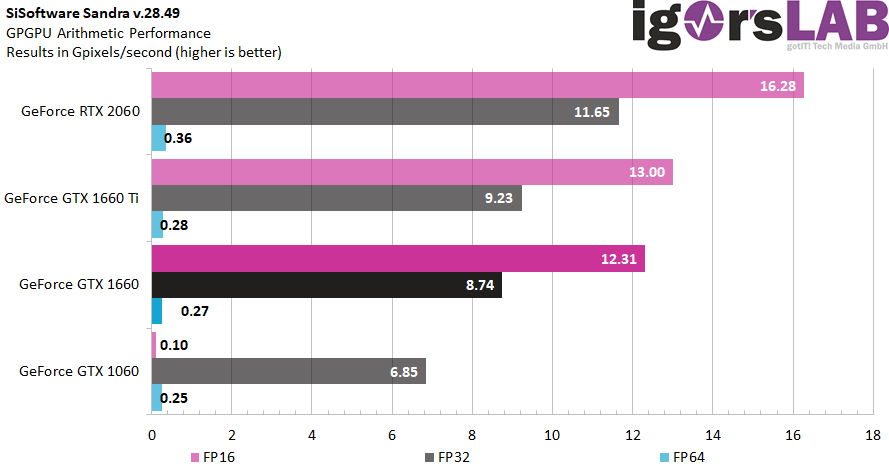
Unfortunately, neither of the two graphics cards provides multi-GPU support. Nvidia confirms once again that multi-GPU settings are only intended to achieve higher, absolute computing performance, rather than giving players a way to design a single GPU configuration in such a way that it might be a more expensive one. single card could cannibalize.
Faster arithmetic even without tensor cores
In addition to the Shaders and the Unified Cache of the Turing Architecture, TU116 also supports an algorithm pair called Content Adaptive Shading and Motion Adaptive Shading, collectively called variable-rate shading. I have already written a longer introduction to the launch of the GeForce RTX 2080 (Ti). Nvidia has also revealed that it is replacing the tensor cores with dedicated FP16 cores to enable the GeForce GTX 1660 Ti to process semi-precision operations at twice the rate of FP32. However, the other Turing-based GPUs also have twice the FP16 performance, so it's unclear how unique the GeForce GTX 1660 is within the Turing family.
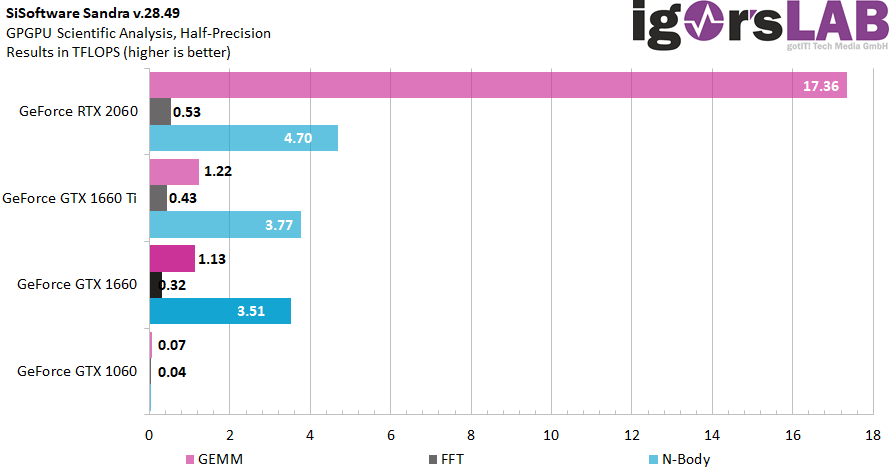
Technical data and comparison maps
At the end of this introduction, the maps of the new generation and those of the old generation in direct tabular comparison:
| MSI GeForce GTX 1660 Gaming X | MSI GeForce GTX 1660 Ti Gaming X | GeForce GTX 1060 FE | GeForce GTX 1070 | GeForce RTX 2060 FE | |
| Architecture | Turing (TU116-400) | Turing (TU116-400) | Pascal (GP106) | Pascal (GP104) | Turing (TU106) |
| CUDA Cores | 1408 | 1536 | 1280 | 1920 | 1920 |
| Tensor Cores | N/A | N/A | N/A | N/A | 240 |
| RT Cores | N/A | N/A | N/A | N/A | 30 |
| Texture Units | 88 | 96 | 80 | 120 | 120 |
| FP16 Power (Peak) | 10 TFLOPS | 10.9 TFLOPS | 4.4 TFLOPS | 6.5 TFLOPS | 12.4 TFLOPS (51.7 TFLOPS Tensor) |
| FP32 Power (Peak) | 5 TFLOPS | 5.5 TFLOPS | 4.4 TFLOPS | 6.5 TFLOPS | 6.2 TFLOPS |
| Base clock | 1530 MHz | 1500 MHz | 1506 MHz | 1506 MHz | 1365 MHz |
| Boost clock | 1860 MHz | 1875 MHz | 1708 MHz | 1683 MHz | 1680 MHz |
| Memory | 6 GB GDDR5 | 6 GB GDDR6 | 6GB GDDR5 | 8GB GDDR5 | 6GB GDDR6 |
| Memory bus | 192-bit | 192-bit | 192-bit | 256-bit | 192-bit |
| Bandwidth | 192.1 GB/s | 288 GB/s | 192 GB/s | 256 GB/s | 336 GB/s |
| Rops | 48 | 48 | 48 | 64 | 48 |
| L2 Cache | 1.5 MB | 1.5 MB | 1.5 MB | 2 MB | 3 MB |
| Tdp | 120 W | 120 W | 120 W | 150 W | 160 W |
| Transistors billions | 6.6 billion | 6,6 | 4,4 | 7,2 | 10,8 |
| The size | 284 mm2 | 284 mm2 | 200 mm2 | 314 mm2 | 445 mm2 |
| Sli | No | No | No | Yes | No |
Test system and measurement methods
I have already described the new test system and the methodology in the basic article "How we test graphics cards, as of February 2017" (English: "How We Test Graphics Cards") in great detail and therefore, for the sake of simplicity, now only refers to this detailed Description. So if you want to read everything again, you are welcome to do so.
If you are interested, the summary in table form quickly provides a brief overview:
| Test systems and measuring rooms | |
|---|---|
| Hardware: |
Intel Core i7-7700K MSI Z270 Gaming Pro Carbon AC 16GB KFA2 DDR4 4000 Hall Of Fame @DDR4 3200 1x 1 TByte Toshiba OCZ RD400 (M.2, System SSD) 2x 960 GByte Toshiba OCZ TR150 (Storage, Images) Be Quiet Dark Power Pro 11, 850-watt power supply |
| Cooling: |
Alphacool Ice Block XPX 5x Be Quiet! Silent Wings 3 PWM (Closed Case Simulation) Thermal Grizzly Kryonaut (for cooler change) |
| Housing: |
Lian Li PC-T70 with expansion kit and modifications Modes: Open Benchtable, Closed Case |
| Monitor: | Eizo EV3237-BK |
| Power consumption: |
non-contact DC measurement on the PCIe slot (Riser-Card) non-contact DC measurement on the external PCIe power supply Direct voltage measurement on the respective feeders and on the power supply 2x Rohde & Schwarz HMO 3054, 500 MHz multi-channel oscillograph with memory function 4x Rohde & Schwarz HZO50, current togor adapter (1 mA to 30 A, 100 KHz, DC) 4x Rohde & Schwarz HZ355, touch divider (10:1, 500 MHz) 1x Rohde & Schwarz HMC 8012, digital multimeter with storage function |
| Thermography: |
Optris PI640, infrared camera PI Connect evaluation software with profiles |
| Acoustics: |
NTI Audio M2211 (with calibration file) Steinberg UR12 (with phantom power for the microphones) Creative X7, Smaart v.7 own low-reflection measuring room, 3.5 x 1.8 x 2.2 m (LxTxH) Axial measurements, perpendicular to the center of the sound source(s), measuring distance 50 cm Noise in dBA (Slow) as RTA measurement Frequency spectrum as a graph |
| Operating system | Windows 10 Pro (1803, all updates) |
- 1 - Architektur, Testmuster, Testsystem
- 2 - Teardown und Analyse
- 3 - Benchmarks bei 1920 x 1080 (Übersicht)
- 4 - Benchmarks bei 1920 x 1080 (Einzelergebnisse)
- 5 - Benchmarks bei 2560 x 1440 (Übersicht)
- 6 - Benchmarks bei 2560 x 1440 (Einzelergebnisse)
- 7 - Leistungsaufnahme im Detail
- 8 - OC, Taktraten, Temperatur, Infrarot
- 9 - Lüfter und Lautstärke
- 10 - Zusammenfassung














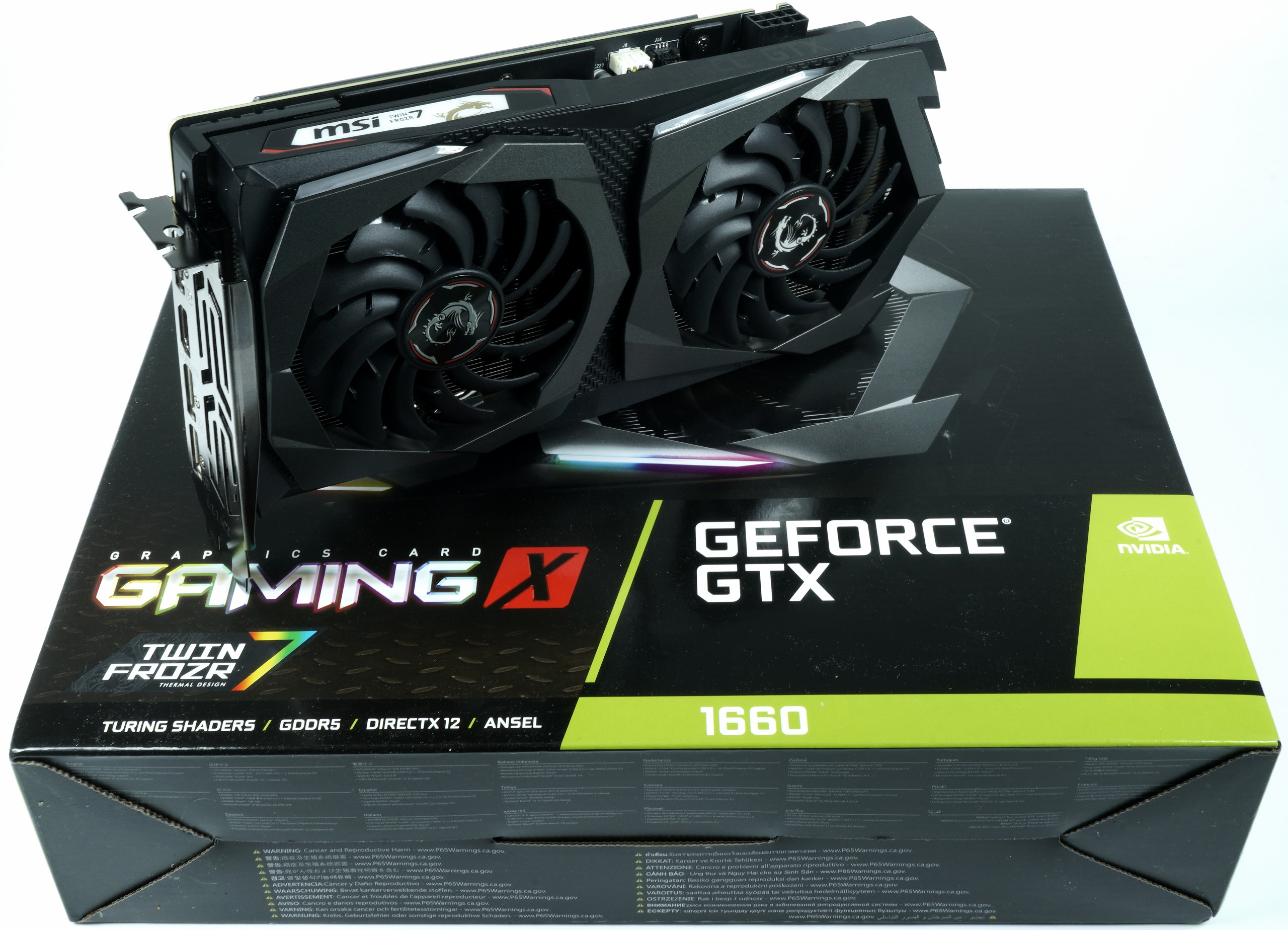
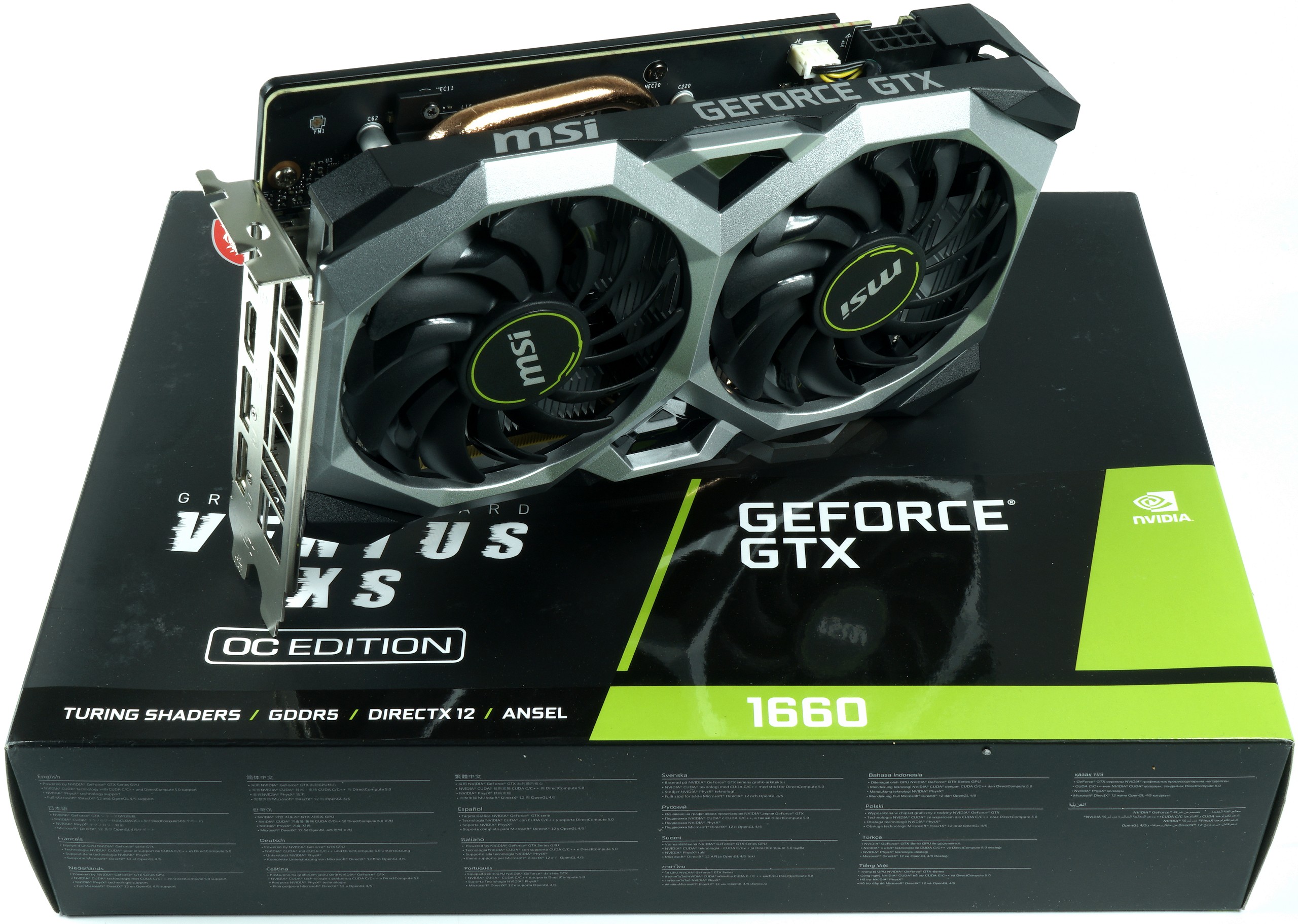


















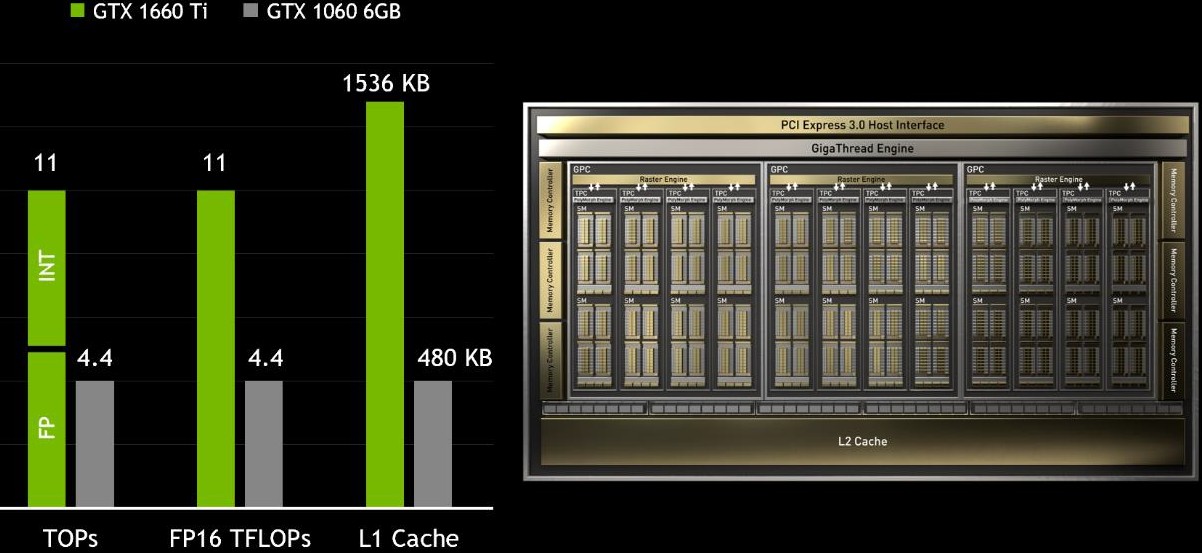
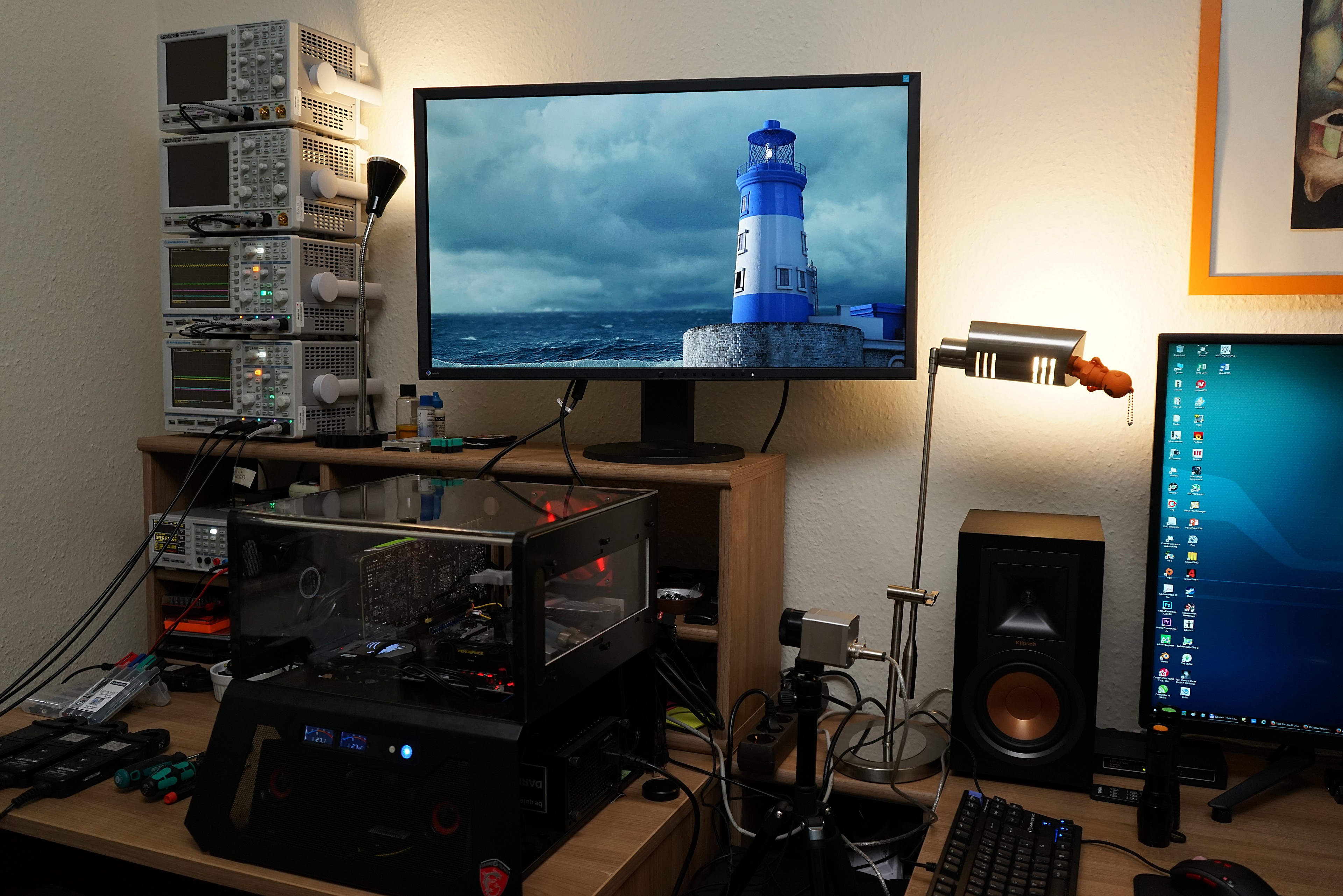


















Kommentieren